
This is the Ultimate Guide to Spam and Robocalls in 2023.
You have heard it before:
“Your cars extended warranty…”
“The IRS is trying to reach you…”
“You may be entitled to compensation…”
These are people and organizations trying to solicit money or information from you. The sad truth is it is nearly impossible to stop every Spam Call, and scammers know that.
Spam is like Thanos. It is inevitable.
The good news is you CAN take steps to reduce spam calls, texts, and the nuisance of robocalls. Let’s show you how.
A “spam call” is a more universal term of any type of unwanted call coming into your phone line(s). Spam calls may include robocalls, solicitor calls, fake calls, spoofed calls, and more.
Of the call complaints reported to the FCC in 2018, almost 4 million of them were robocalls. Robocalls were responsible for the majority of all call complaints. They made up up 66% of all reported complaints.
Most of the live callers are residents from countries outside the United States calling in. Many of these are from contact centers trying to get your information or money.
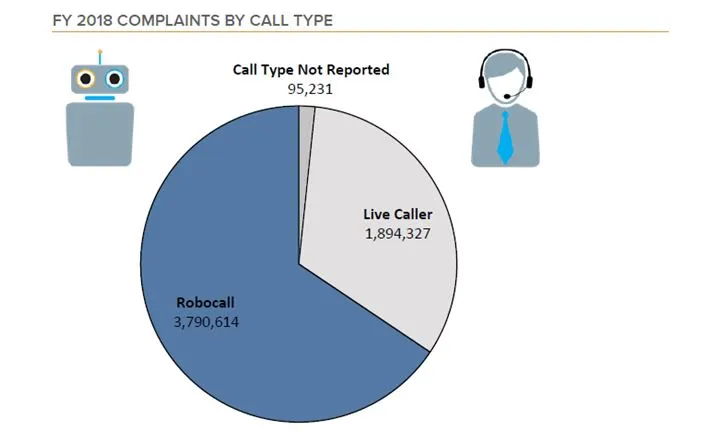
Robocalls are automated telephone calls that go through lists of numbers and deliver a recorded message to your phone, either legally or illegally. These calls are typically made with an autodialer, using a prerecorded or artificial voice.
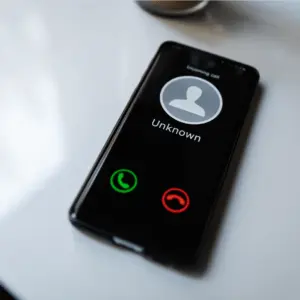
The technology to make these calls is cheap and easy to use. This is why the practice of scamming is rampant. Companies producing these illegal phone calls are usually looking to phish information and take your money. One way they do this is through a practice called spoofing.
Some robocallers can even mask their numbers; this is called spoofing. Spoofing makes the call look like it is coming from a different phone number than it is.
With number spoofing, you may see a particular phone number calling you – but that is not the true origin of the placed call. The real number is hidden by the spoofed phone number.
If you call back a spoofed phone number, you won’t reach the original caller – since the spoofer masked the real phone number with a different, perhaps real, phone number. Ever have someone call your phone, saying that you called them when you know that you didn’t? You may have been a victim of having your number spoofed.
The FCC is working to battle these callers’ invasions of our privacy, but that is an ongoing process. Don’t expect Spam to stop just because of this.
Now that we have a basic understanding, let’s get into strategies and best practices for stopping spam calls.
STIR/SHAKEN is an acronym for Secure Telephone Identity Revisited (STIR) and Signature-based Handling of Asserted Information Using toKENs (SHAKEN). These protocols are created and will be enforced by the Federal Communications Commission. (FCC) This legislation went into effect on June 30, 2021.
In practical terms, STIR/SHAKEN requires a legitimate CallerID for each call that is both confirmed by the original carrier and validated by at least one other carrier.
Carriers who comply with these new regulations will be able to present trust indicators, such as “call confirmed” messages, to their leads. If carriers do not comply or illegally spoof CallerIDs, STIR/SHAKEN enables fast and efficient action against the calls in question.

In short, STIR/SHAKEN is a system for you to make sure the one who is calling is a valid person, and not a bot or spam call.
To learn more about Stir/Shaken, check out our blog article.
Reporting helps prevent others from receiving spam calls from the same number. If this is a practice everyone follows, it makes it much more difficult for scammers.
Report Robocalls with the FTC.
Registering to the Do-Not-Call registry makes it illegal for spammers and robocalls to call a registered phone number.
Register a number as “Do-Not-Call” with the FTC.
The sad reality, is that spammers do not follow the laws. While this can be useful to an extent, you should still expect a significant amount of spam calls to reach you.
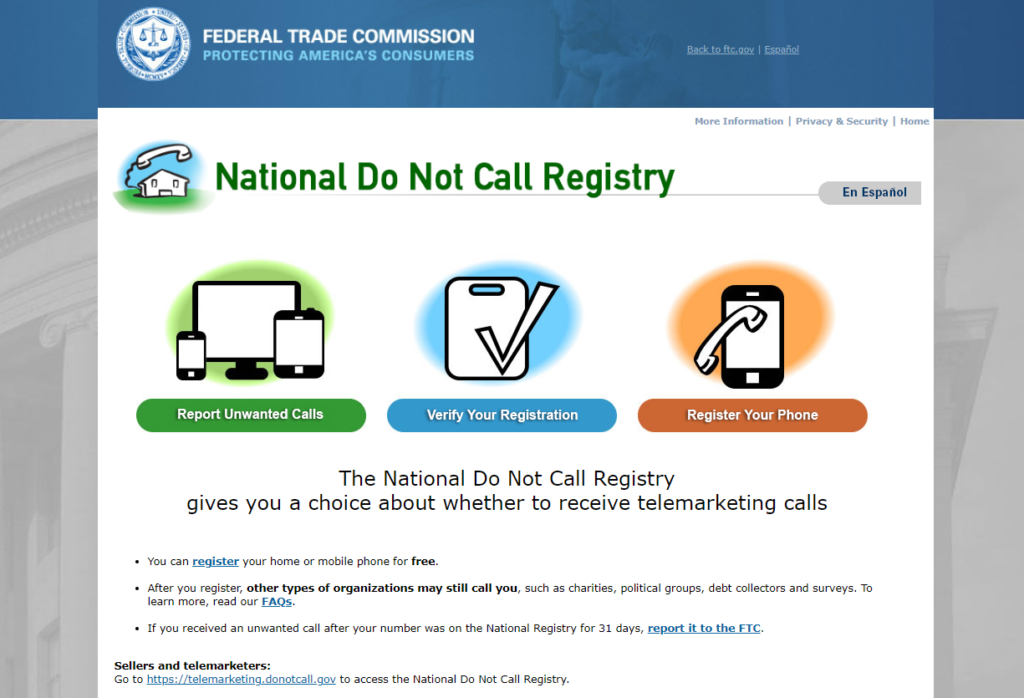
While scammers won’t respect the FTC’s Do Not Call Registry, it can’t hurt to register your landline and mobile phone numbers at donotcall.gov
From the website, you can:
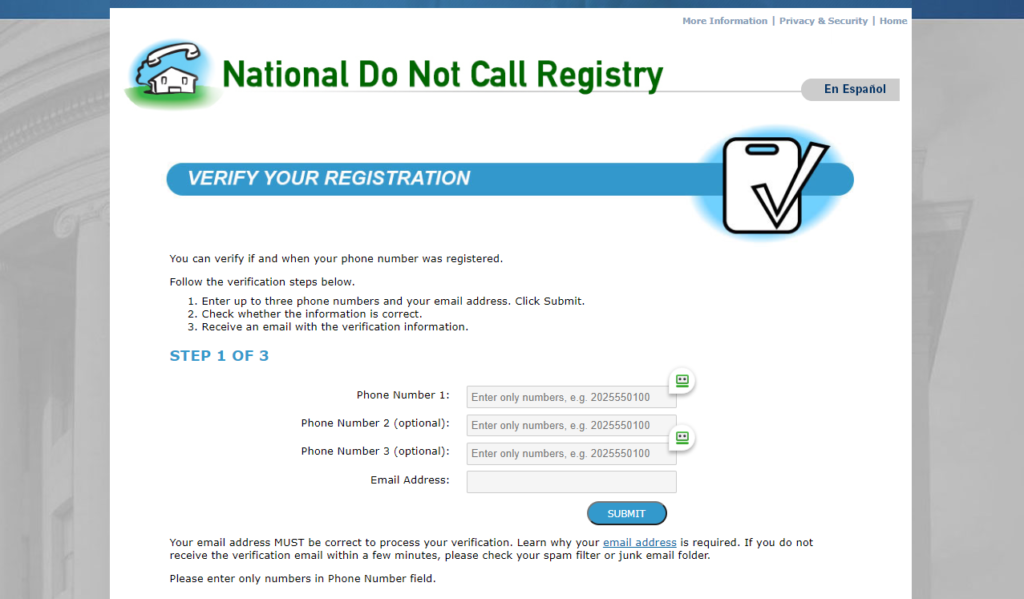
If you think you have already registered with the Do Not Call Registry, select Register Your Phone –> Verify Here. Type your associated phone number and email address, then click Submit. At the next screen, click Verify to confirm your number and email address. You’ll receive an email indicating whether your number is already registered.
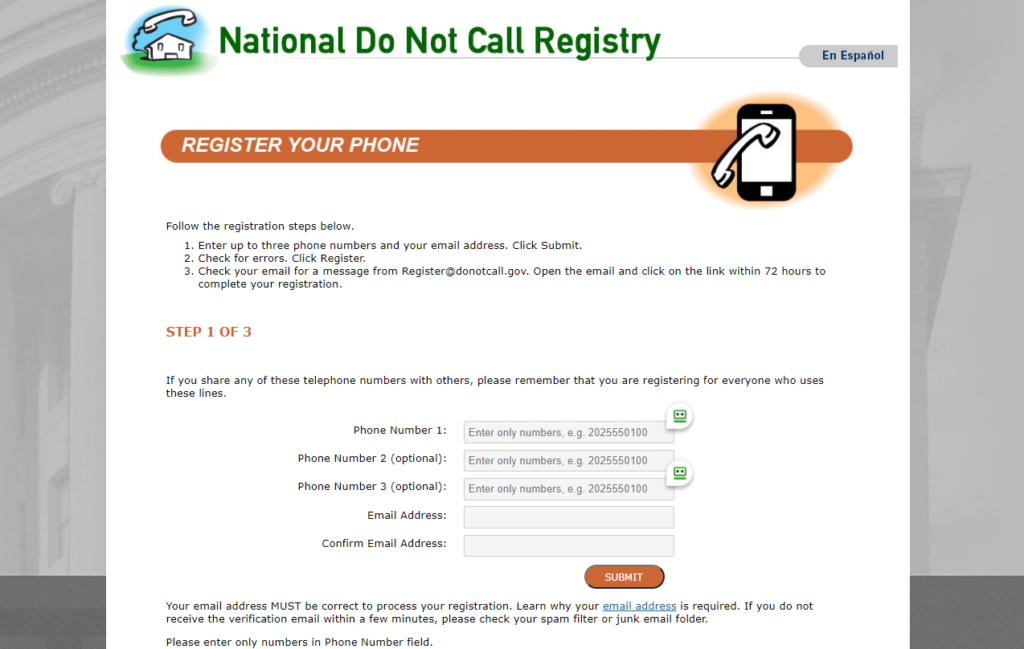
If you’re not already registered, select Register Your Phone > Register here. Enter your phone number and email address, then click Submit. Confirm your information, then click Register. You’ll then be directed to check a message in your email. Click on the link in the message to complete your registration and add your number(s) to the Do Not Call Registry.
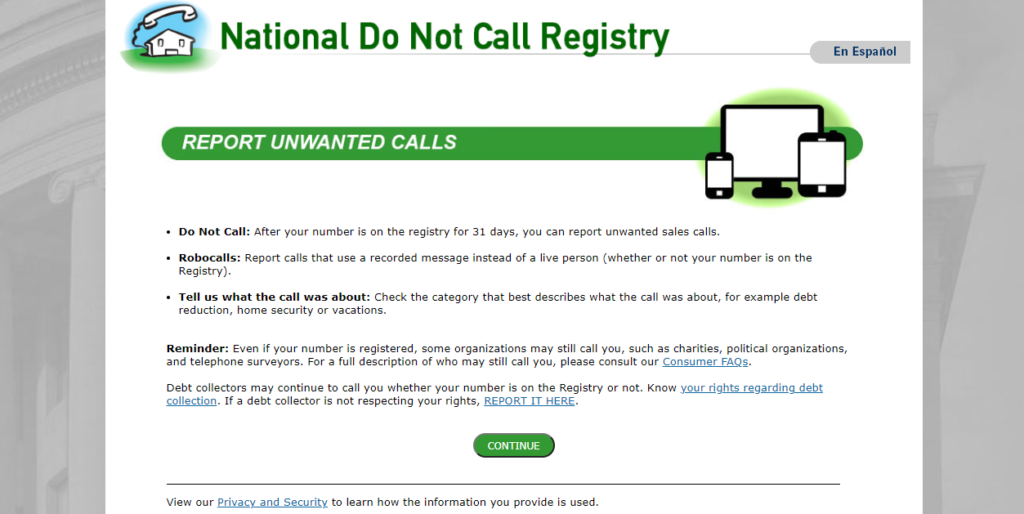
For your personal device, you can use these extensions from common providers to help limit spam.
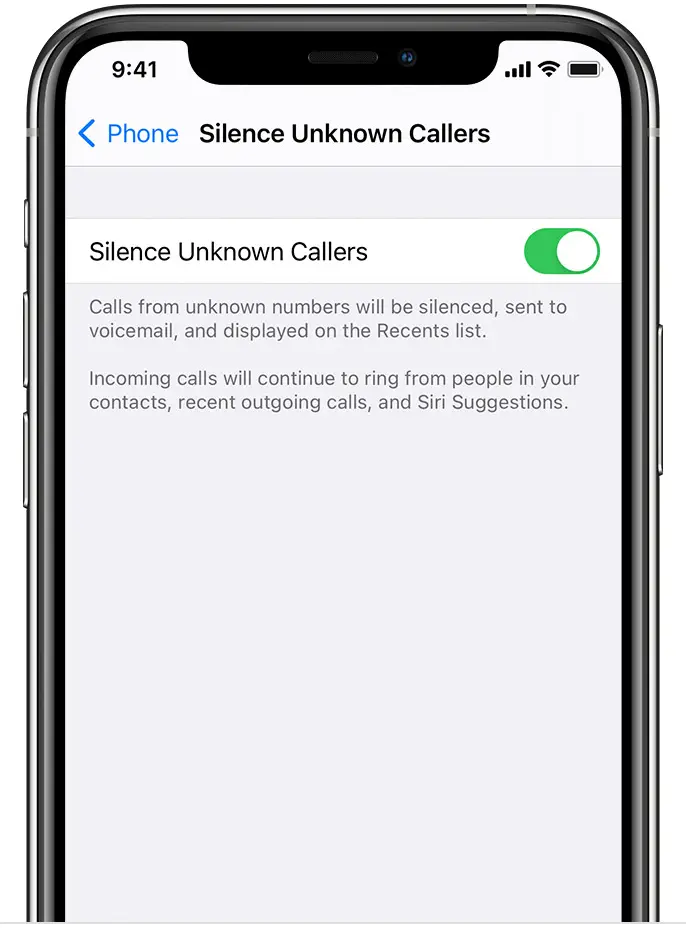
This is a link to Apple’s guide on blocking calls.
Samsung’s Smart Call service informs you if a call you are receiving is from a known robocaller. While it may not be available on all carriers and models, it’s worth checking to see if you have the service. Here’s how to activate it:
Don’t:
Avoid, whenever possible, giving your number out on the internet or to unknown sources
If your business is not currently protected from spam and fake calls, this may impact your call tracking data.
Some advertising companies promise to bring you a specific amount of calls or leads by advertising with them. If any of your ad tracking phone numbers are getting bombarded with fake calls, this will greatly skew your data.
Make sure that you use your own call tracking for the extra security to see from your own data how well all of those ads are truly performing. If your call tracking provider gives metrics around the types of calls coming in, look at those reports. If you have basic call tracking without additional metrics, listen to calls to see what is happening, and pay attention to conversation lengths.
Spam, like Thanos, is inevitable. As long we we live in this technological era, Spam will be a part of life and doing business. Fortunately, you can reduce Spam by following these steps. If you would like to learn more or need help implementing these, you can get started with Convirza and receive a Free 21-Day trial.
You can learn more about STIR/SHAKEN and how Convirza uses AI to eliminate Spam Calls.

Book A Quick 15 Minute Call,
And We’ll Show You How To Unlock The Power Of Every Conversation.

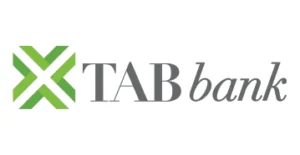
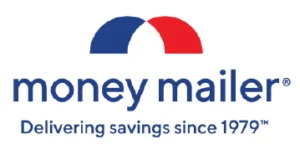





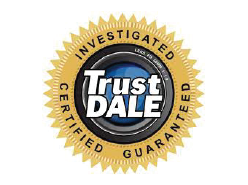




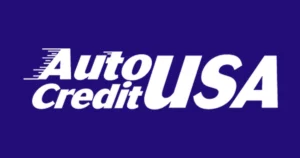














©2025 All rights reserved – Convirza